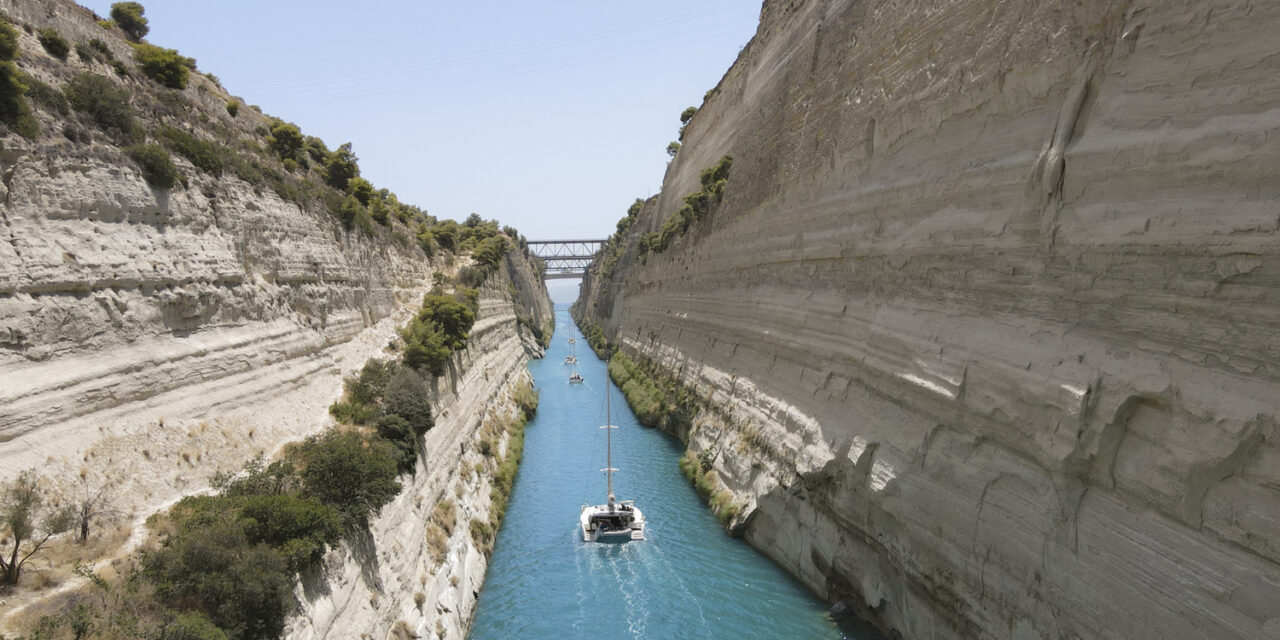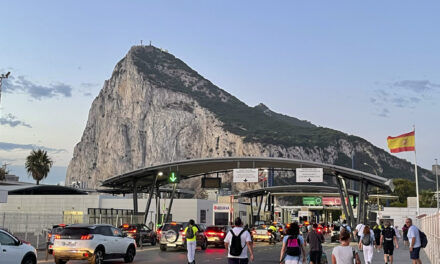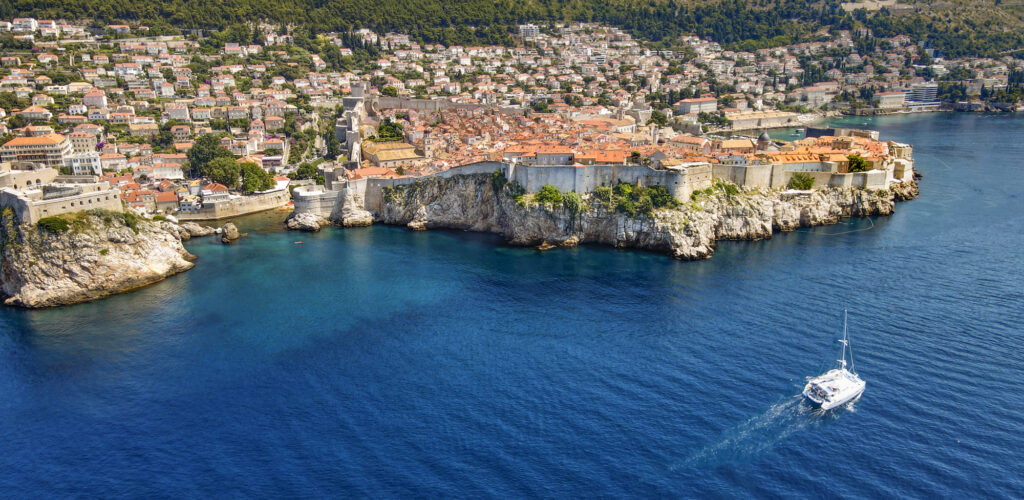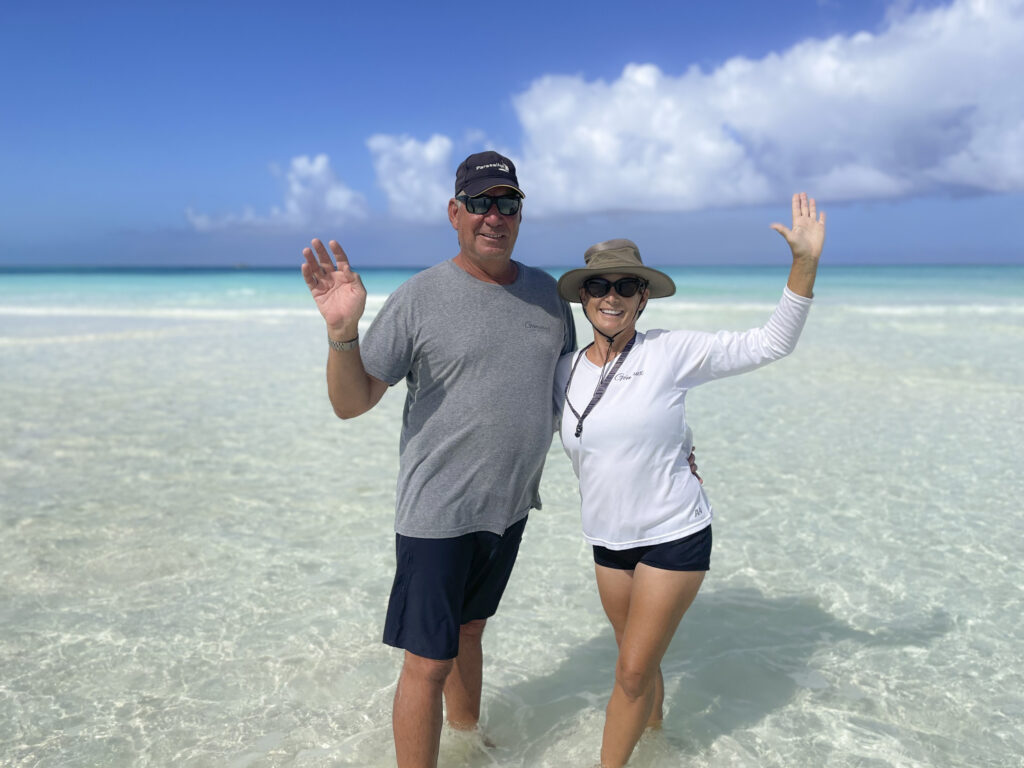It’s just four miles long and 80 feet wide. It joins two large seas and turned an entire peninsula into an island. It’s the world’s deepest manmade canal, plummeting 170 feet to the surface of the water and another 26 feet to the bottom. Its narrow width makes it impassable by most modern vessels, but Gémeaux made the cut.
Construction on the Corinth Canal began in the 7th century BCE. Roman Emperor Nero first began work using war prisoners and slaves to dig out a ditch two miles long and 150 feet wide. Nero died and so did the project. Rulers came and went over the centuries but the threat of flooding, constant landslides in this active seismic zone, lack of financial resources, wars, and often their own untimely deaths, prevented any of them from resurrecting the project. Even centuries later in 1881, when formal construction finally resumed and was actually completed, the canal still was riddled with problems and remained largely unused. Finally, in 1948, the US Army Corps of Engineers officially opened the Corinth Canal for traffic.
Not surprising, after all its historical starts and stops, the Corinth Canal closed in 2021 after suffering extensive damage from landslides. It reopened for a few months in the summer of 2023…just as we were making our way from the Ionian Sea to Athens in the Aegean Sea. Not only could we avoid the extra 430 miles around the entire Peloponnese Peninsula (er, now island) to reach the Aegean Sea, transiting this magnificent channel had a huge wow factor for us.
We left our anchorage by 6am before the sun debuted over the mountains. Just after noon, we arrived at the entrance to the canal—it was 107 degrees. We paid our €200 fee and waited our turn with four other sailboats, much like waiting for the green light after the single lane of road construction is free from oncoming cars. Here in Posidonia, however, we also were waiting for cars to pass over a short bridge that connected the Peloponnese to mainland Greece. There are bridges that lift and bridges that swivel, but never had we seen a bridge submerge to open up a waterway. We were wowed even before entering the canal, watching the bridge sink far enough under water that we could pass over top of the road. A single catamaran appeared from the oncoming westbound traffic and then, the canal was ours.
As the limestone cliffs began closing in around us, the captain faced a difficult decision. Should he drive the boat? Or, should he fly the drone to capture this amazing moment? In other words, which precious darling did he want to relinquish to the Admiral? In the end, he navigated the drone while I got the distinguished honor of navigating Gémeaux through this engineering marvel.
While Gémeaux’s 24-foot width left about 25 feet on either side, the sheerness of the rock walls, especially where rocks and debris had fallen, made the passageway feel even tighter. We paid close attention. We did not want to hit the curb, create a rockslide, and land on the front page of the NYT announcing that the canal once again was closed.
It was quiet, almost tranquil as our little motorcade of sailboats moved along at a gentle pace. The layers of carbonate-rich marl, silt, clay, and calcite was a geologist’s dream. Having slept through most of my geology studies, however, I simply took in the magnificent colors—shades of browns and whites sharply contrasted with the smooth aquamarine water, completely free of wind. Bushes, wild grasses, and even trees sprouted from various crevasses in the rock. Beauty aside, I couldn’t shake the persistent reminder that it all began with a simple pick ax…more than 2000 years ago. Looking closely, I could actually see the stratification of ancient versus modern excavation and repairs. The canal base and various areas of the cliff walls, where fault lines tempted rockfall, were reinforced with brickwork. An occasional piece of equipment from different points in time lay rusting in rubble.
At mile three, we became celebrities. Tourists crowded an overhead bridge for a different perspective of the Corinth Canal, complete with a real-life marine transit. One hour later, we reached the eastern end of the canal in Isthmia. Once again, we marveled at another submerging bridge and then were quickly jolted back to reality as a nearby oil refinery assaulted our senses. We put up the jib and sailed quietly away, forever processing the wonder of our experience.










Cool! I don’t remember you telling us about this last summer.
That was an amazing post! How lucky you are to have done this and I can’t believe Allen had the balls to fly the drone while you were underway (actually, I take that back- of course he had the balls)! Thanks for the history lesson and the amazing description and fabulous pictures. That’s quite the adventure!
Love your blog! How interesting to go thru the canal. You write so beautifully! Thank you for sharing your fantastic adventures!